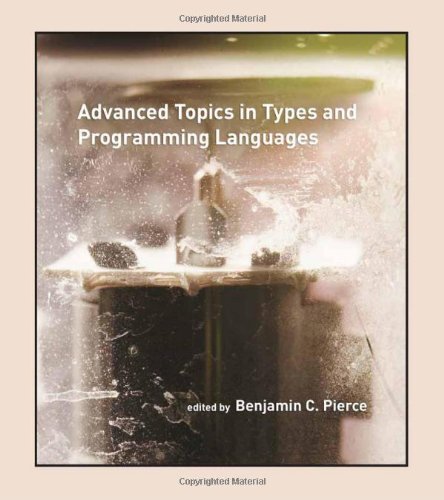Types and Programming Languages pdf free
Par cambra marie le samedi, juillet 9 2016, 12:33 - Lien permanent
Types and Programming Languages. Benjamin C. Pierce

Types.and.Programming.Languages.pdf
ISBN: 0262162091,9780262162098 | 645 pages | 17 Mb

Types and Programming Languages Benjamin C. Pierce
Publisher: MIT
There are two types of programming languages, which can be categorized into the following ways: 1. In a future post I will probably look at some already existing programming languages and examine how much current languages are able to meet my desired features. In traditional programming languages, basic types are defined by the compiler, which complicates cross-language interoperability. Different types of Programming Language. If we have to classify programming language we can seperate them in two categories which are listed below. Dependent types are the Curry-Howard interpretation of first-order logic. For me it all started when I took up TAPL (Types and Programming Languages) by Benjamin Pierce. The deficiencies of the programming language found in the research were incompeteness of type checking, and inadequacy of control statements (requiring extensive of gotos). A type system is a tractable syntactic method for proving the absence of certain program behaviours by classifying phrases according to the kinds of values they compute” (Types and Programming Languages , Pg. We are recruiting for research associate positions in design and implementation of programming languages, and also may have PhD studentships available this year and next. Basically, I have yet to see a C programmer telling me that she/he prefers dynamic type. In the .NET Framework, basic types are defined by the . If you are a regular reader of my blog, you must be aware that one of the things that I get interest in is *types*. This report describes an extension to the C programming language to introduce the notion of ranged integers, that is, integer types with a defined range of values. Types of Programming Languages. First, note that we represent individual values in a functional programming language using programming language expressions. Most of the time, the candidate strongly prefers one system (based on the programming language used mostly).